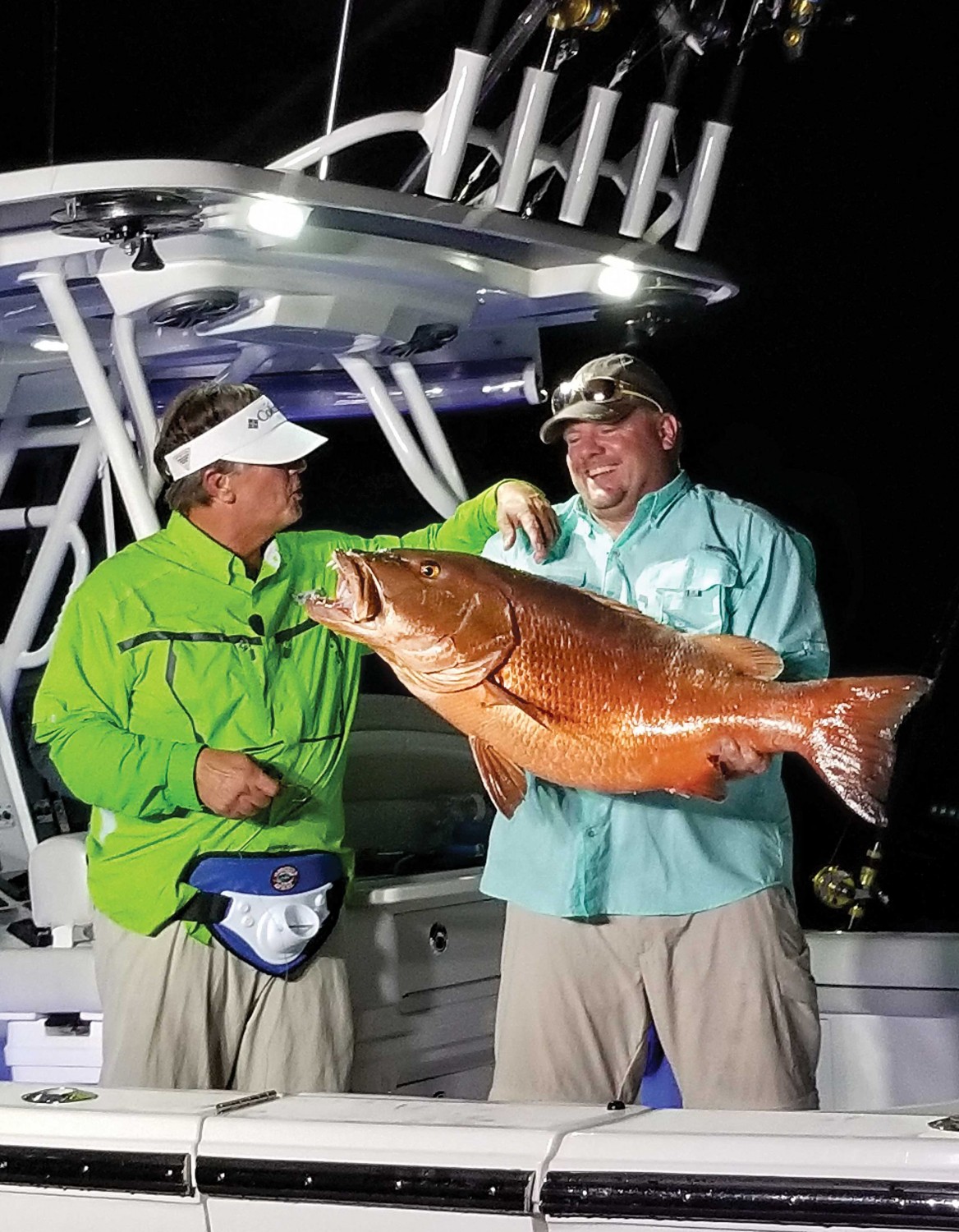Article Courtesy: saltwatersportsman.com | Originally Published: 11/16/20 | Click here for original article
How to Use Fishing Lights
Underwater fishing lights draw forage species and, ultimately, predators into the upper water column and often to the transom. Illumination penetrating a dark ocean draws attention like a neon restaurant sign to hungry motorists. But there’s more to it than simply plug-and-play. There is a science behind it.
Light Show
On a recent night-snapper trip off Fort Myers, Florida, Steve Sewell and I were targeting mangrove snapper 65 miles offshore. The particular wreck we were fishing was touted for holding big yellowtails, as well as an occasional mutton snapper.
We anchored prior to sunset, hung over a chum bag, and activated my Shadow Caster LED transom fishing lights, in Bimini Blue. Darkness brought two surprises. Despite the mass of mangrove snapper marked on the wreck, not one rose to the chum slick. Shortly thereafter, we were visited by pods of porpoises frolicking around the boat, feeding on flying fish and squid drawn by our lights. With these top-tier predators about, mangroves and yellowtails dared not venture near the surface.
Looking to shoot a TV show episode, shutting down the lights was not an option. Fortunately, the slow current allowed Sewell’s jig—tipped with a chunk of cigar minnow—to reach bottom, where it was consumed by a mutton snapper. He repeated the move four times, and scored as many muttons. I adjusted my technique, and joined Sewell in limiting out on muttons.
Why weren’t our muttons intercepted by porpoises? I believe they recognized our lights were responsible for their feast, so as payback (to keep us from shutting off the lights), they left our catch undisturbed.
Voice of Experience
With over five decades of bottomfishing experience, Capt. Bouncer Smith states that some snappers, mangroves in particular, don’t like unnatural light. “When we fished for mangroves at night, we used as little light as possible,” he says. “We’d dim our anchor light and shut off any lights in the boat, and the mangroves chummed up nicely. When I worked on headboats, the deck and bridge lights cast a wide glare on the water, so we’d cast beyond the throw of the light, and let the bait sink. We often bailed the mangroves using this tactic.”
Key West Capt. Mark Schmidt agrees that dark is best for mangroves and yellowtails. “Lights aren’t conducive to night chumming for snappers,” Schmidt says. “The best light comes off the moon. Fishing lights attract bait, which, combined with chumming, brings in sharks, king mackerel and jacks, all major snapper predators. Plus, we fish in shallow water, 60 to 90 feet. With illumination, I believe mangroves and yellowtails lose their sense of security, and they won’t leave the reef. It’s just not comfortable for them.”







